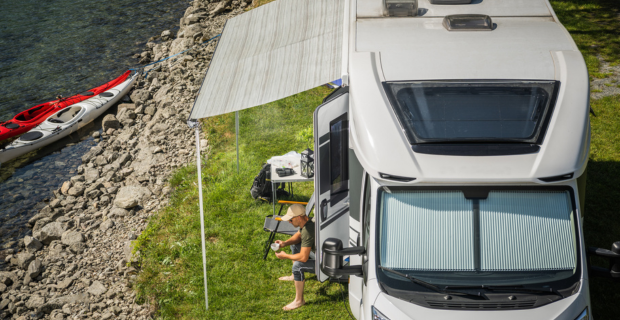Date Published: 2024/08/06
Read Time: mins
A guide to boondocking in Canada

Boondocking is the practice of camping without using any of your RV’s hookups. However, you still have use of your electrical, sewer, and water systems. Before attempting RV boondocking for the first time, it is important to understand how your RV works and any limits it has.
Canadian boondocking guide
You are in luck if you are trying to find free places to camp in Canada. Several businesses, including Backcountry Canada Travel, publish guides that list places you can boondock. The list includes traditional campgrounds as well as retail and other establishments willing to allow people to camp in their lots overnight without paying a fee.
Below are several tips offered by Backcountry Canada Travel for making the most of free campsites.
- Make sure that you and the people travelling with you feel prepared for rugged conditions like no running water or flushing toilets. Some people find that the reality of camping in such conditions for a few days is much different than the romanticized version they had in their head.
- Remember that the terrain driving into your free campsite could be quite rough. If you have any doubts that your RV can handle it without an incident, choose a different campsite.
- Plan where you want to camp while you are still at home, since you may run into areas with no or limited Wi-Fi connections.
- Make sure you clean up after yourself before leaving the campground, including putting out your campfire. Do not disturb wildlife and stay away from anything marked private property.
- Check the temperature to ensure that you and your travelling party will be neither too warm nor too cold while in your RV. Temperatures that range from approximately five degrees Celsius to 21 degrees Celsius are ideal.
Since you may be quite a way off the beaten path, you need to make sure that you have enough supplies with you for the planned duration of the trip. For example, bring enough water to run your water pump and propane for the heater. You also want to bring enough batteries with you to provide lighting for up to 48 hours if necessary.
Charging your battery
You have two options when it comes to charging your RV battery. The first is to leave your boondocking site and find a place on shore to plug in your RV. A full charge typically takes between six and 10 hours. If you brought a generator with you, just start it, and plug your RV in until it completes a charging cycle. Having solar power available is also useful because your battery will charge itself on sunny days.
Freshwater tanks
Most RV tanks hold between 150 and 375 liters of water, and the typical Canadian RVer with one passenger goes through about 275 liters in a two-day trip. You and those camping with you need to be mindful of water consumption to ensure you have enough for the duration of your boondocking experience. Taking short showers every other day is just one way to make your water stretch further.
Remember that you need to dispose of wastewater from your toilet, sinks, and shower. You can either take it to a dump station or invest in an external tank where you can dump the wastewater without having to leave your campsite.
Don’t forget to insure your RV
Boondocking takes a lot of work and pre-planning, so much so that you may forget to check if the insurance policy on your RV is up to date. We invite you to contact Orbit Insurance Services to go over your policy or request a quote if you aren’t currently a customer.